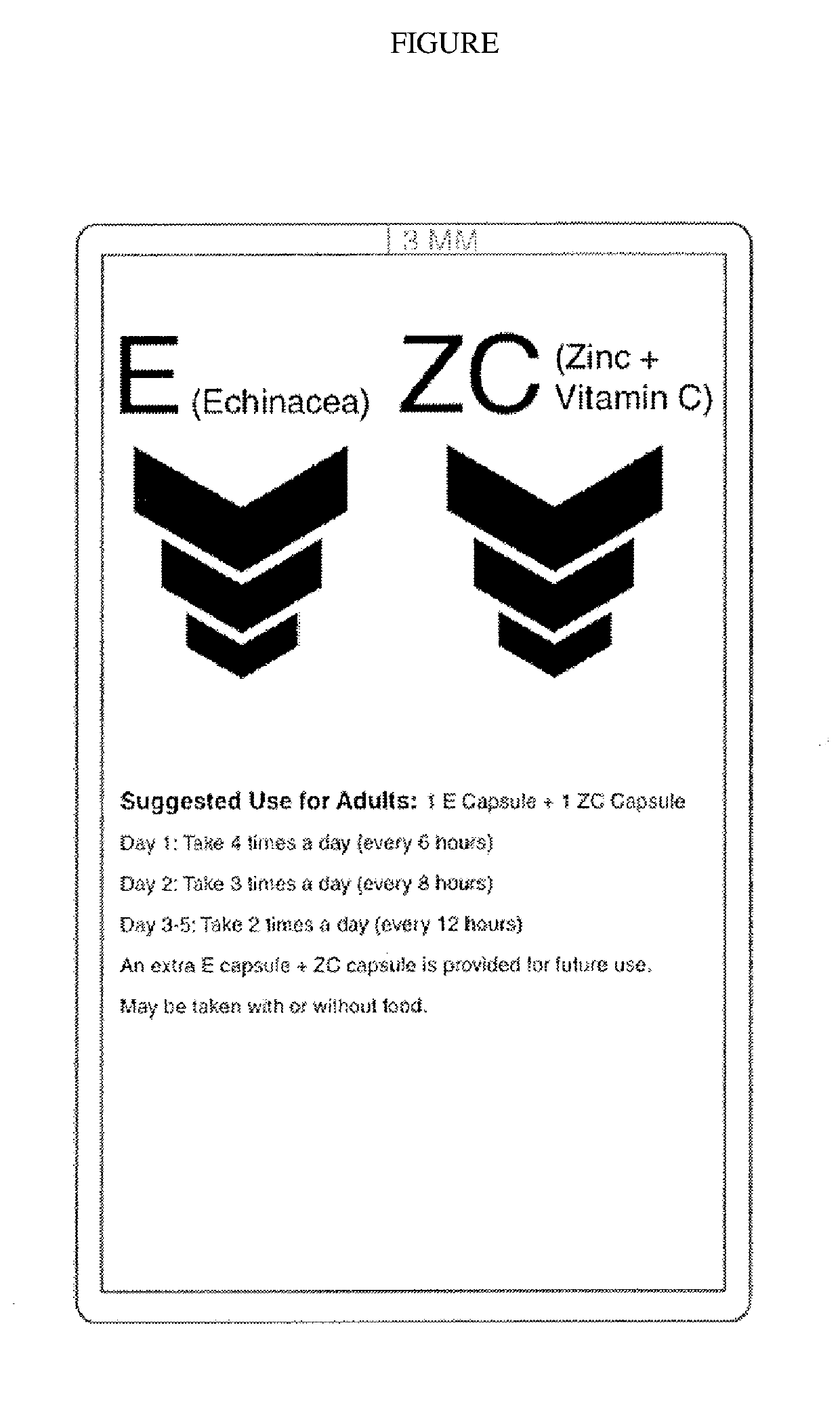Composition and methods of use for immune system support
a technology of composition and immune system, applied in the direction of capsule delivery, plant/algae/fungi/lichens ingredients, capsule delivery, etc., can solve the problems of user error, inaccurate and rapid diagnostic tests assessing whether an infection is present, and the accuracy of user errors, so as to reduce antibiotic use, improve absorption and therapeutic effect of composition, and increase zinc and vitamin c absorption
- Summary
- Abstract
- Description
- Claims
- Application Information
AI Technical Summary
Benefits of technology
Problems solved by technology
Method used
Image
Examples
Embodiment Construction
[0019]A preferred embodiment for the combination of ingredients and delivery is comprised of two capsules as a single dose taken in a dose schedule intended to maximize support of the patient's immune system. The first capsule contains Echinacea. The Echinacea dose range is 50 mg to 1000 mg. In a preferred embodiment, the Echinacea capsule dose is 550 mg of powdered Echinacea purpurea from the flower's root, seed, and aerial portions. The second capsule contains zinc and vitamin C. The dose range of the capsule is 3 mg to 150 mg of elemental zinc and 25 mg to 2000 mg of vitamin C. In a preferred embodiment, zinc is delivered in the form of zinc acetate powder at a dose of 25 mg of elemental zinc and the vitamin C is delivered in the form of powder at a dose of 250 mg.
[0020]The two capsules containing the Echinacea and the combined zinc and vitamin C dose can be composed of any delivery vehicle that can effectively deliver all of the components effectively into the bloodstream, inclu...
PUM
| Property | Measurement | Unit |
|---|---|---|
| composition | aaaaa | aaaaa |
| time | aaaaa | aaaaa |
| pressure | aaaaa | aaaaa |
Abstract
Description
Claims
Application Information
 Login to View More
Login to View More - R&D
- Intellectual Property
- Life Sciences
- Materials
- Tech Scout
- Unparalleled Data Quality
- Higher Quality Content
- 60% Fewer Hallucinations
Browse by: Latest US Patents, China's latest patents, Technical Efficacy Thesaurus, Application Domain, Technology Topic, Popular Technical Reports.
© 2025 PatSnap. All rights reserved.Legal|Privacy policy|Modern Slavery Act Transparency Statement|Sitemap|About US| Contact US: help@patsnap.com

